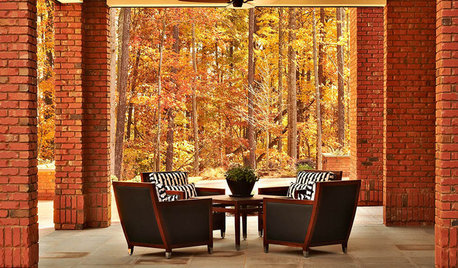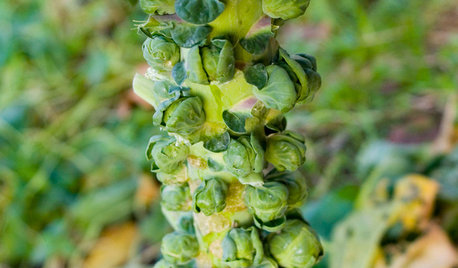Growing Cardoons -- first time!
jillzee
13 years ago
Related Stories

EDIBLE GARDENSWhy Grow Quince? For Beauty, Fragrance and Old-Time Flavor
Delightfully perfumed fruit and lovely spring blossoms make this apple and pear cousin worth a spot in the garden
Full Story
GARDENING GUIDES10 Easy Edibles for First-Time Gardeners
Focus on these beginner-friendly vegetables, herbs, beans and salad greens to start a home farm with little fuss
Full Story
ARCHITECTUREGet a Perfectly Built Home the First Time Around
Yes, you can have a new build you’ll love right off the bat. Consider learning about yourself a bonus
Full Story
LIFEWorld of Design: Discoveries of 10 First-Time Homeowners
See how people around the globe have shaped their starter houses and made them their own
Full Story
HOUZZ TOURSMy Houzz: Eclectic Repurposing Fits First-Time Homeowners in Utah
DIY projects using reclaimed materials add rustic style to an open-layout Salt Lake City home
Full Story
BUDGET DECORATING13 Versatile Furniture Pieces That Grow With You
Build a collection of high-quality pieces that will work from that first solo rental to a long-term home
Full Story
FARM YOUR YARD6 Things to Know Before You Start Growing Your Own Food
It takes time and practice, but growing edibles in the suburbs or city is possible with smart prep and patience
Full Story
GARDENING AND LANDSCAPINGGrow a Lush Privacy Screen
No need to wait forever for patio privacy the green way. These 10 ideas will get your screening up and running in no time
Full Story
COOL-SEASON CROPSCool-Season Vegetables: How to Grow Brussels Sprouts
If you love 'em (you know who you are), fall and spring are the right times for planting these veggies in your edible garden
Full Story0

WINTER GARDENINGExtend Your Growing Season With a Cold Frame in the Garden
If the sun's shining, it might be time to sow seeds under glass to transplant or harvest
Full StoryMore Discussions







glib
jillzeeOriginal Author
Related Professionals
Lowell Landscape Architects & Landscape Designers · Rancho Palos Verdes Landscape Architects & Landscape Designers · Saint Louis Park Landscape Architects & Landscape Designers · Signal Hill Landscape Architects & Landscape Designers · Brookside Landscape Contractors · Blue Springs Landscape Contractors · Cornelius Landscape Contractors · Lakeville Landscape Contractors · North Canton Landscape Contractors · Oak Harbor Landscape Contractors · Post Falls Landscape Contractors · San Pedro Landscape Contractors · Stony Brook Landscape Contractors · West Chicago Landscape Contractors · Thornton Driveway Installation & Maintenanceglib
jillzeeOriginal Author
glib
remy_gw
jillzeeOriginal Author
remy_gw
SandraMay
jillzeeOriginal Author
teauteau
glib
sunnibel7 Md 7
glib
Cardoon.gr / Cardoon Hellas / Αγριαγκινάρα